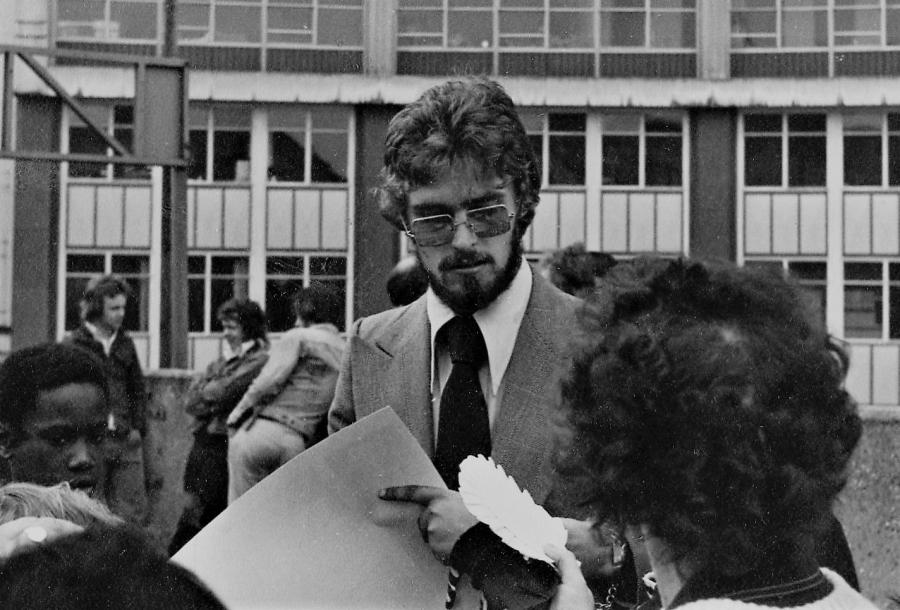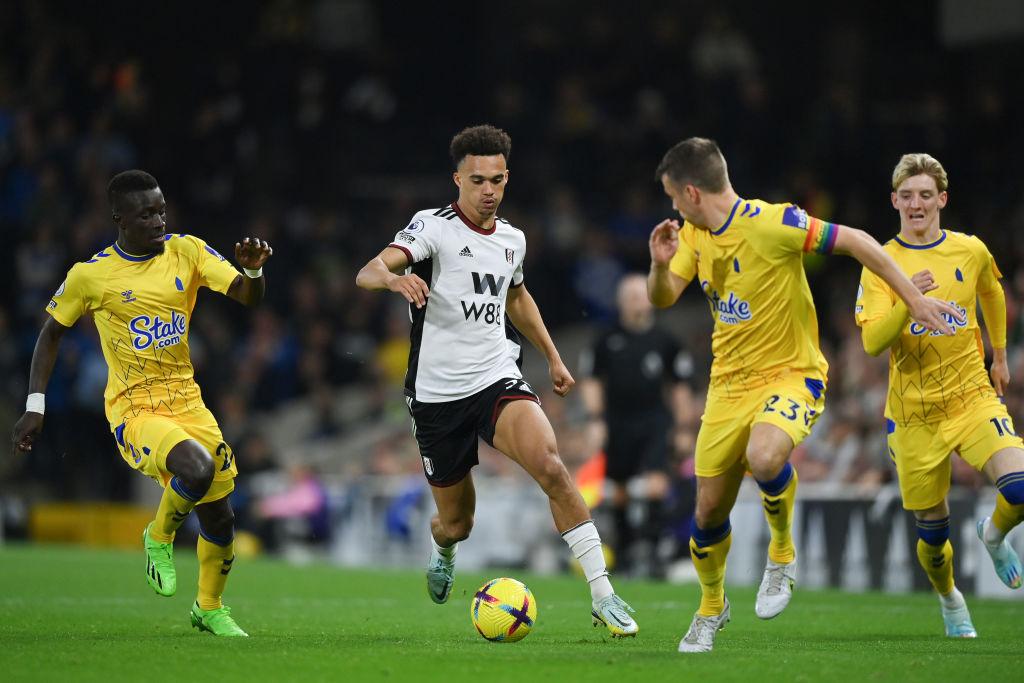Just before Christmas 1963, I attended Arsenal v Leicester City – a League match that celebrated the 50th anniversary of Highbury Stadium.
During the interval it was fascinating to see on the pitch three men who had represented Leicester in the equivalent fixture 50 years before.
Times change and it is now refreshingly commonplace to have Fulham FC personalities from the 1970s and earlier being interviewed at half-time and presented with special mementos. The most recent recipient was Viv Busby. My photo (below) from that distant era shows Viv signing autographs, not long before the 1975 FA Cup Final.

Getting back to the Arsenal-Leicester match I recall that the Gunners lost 1-0 mainly because of a superlative display by the visitors' goalkeeper Gordon Banks. His pre-eminence was well earned – but oddly he found Fulham his bogey team and rarely shone against them, so I was glad to have been at Highbury that day to see him at his best.
Duelling goalies
The tactics of modern football rather prevent virtuoso goalkeeping displays. Managers will now demand to know why the 10 outfield players were not giving more protection.
But last Saturday's match at Craven Cottage afforded the spectators, particularly in the first half, the chance to admire the skills of Bernd Leno and Everton's Jordan Pickford. The opening 10 minutes saw Leno athletically turn aside a full-blooded dive from the unmarked Demarai Gray followed by three similar saves by his Everton counterpart, foiling Willian, Aleksandar Mitrovic and Hamilton Reed.
The visitors hastily sorted out their defence and when the keeper was finally beaten Calvert Lewin was there to head the ball to safety.
The teams could scarcely maintain that level of activity and the match became more of a strategic tussle in midfield with the keepers restricted to the occasional routine save.
Watch the clock
Early on, Everton seemed to be time-wasting and in the second half they were clearly seeking a draw.
Fulham had their chances, but Mitro was below his best.
Spectators stayed to the end in hope though the chances of a goal dwindled. An absorbing contest ended in a goalless draw, destined for the final slot on Match of the Day.
Fulham's Man of the Match had to be a defender – and supporters rightly chose Antonee Robinson.
An unusual feature was the almost complete absence of VAR.
It certainly improved the flow of the match, and the on-pitch referee John Brooks was in control throughout. There were two occasions when a second opinion could have been critical. Slow motion analysis might have turned Mitrovic's yellow card for a reckless tackle into a red; and Willian, our most effective forward in the second half, certainly appeared to be tripped by Idrissa Gueve as he entered the penalty area. Right or wrong the ref's decisions were swift and even-handed.
Challenges and notables
Our final opponents before the World Cup are the two Manchester clubs. An interesting challenge.
Two points relate to last week's blog. Leeds and Jesse Marsch responded to their recent set-back by winning at Liverpool, something not achieved in the League by any team since... Fulham.
And Diego Costa was universally condemned for an act similar to the one for which Villa's Douglas Luiz won a pardon. Could the authorities now release a video on 'Head-butts: Legal and Illegal'?
The views expressed in this blog are those of the author and unless specifically stated are not necessarily those of Hammersmith & Fulham Council.
Want to read more news stories like this? Subscribe to our weekly e-news bulletin.

